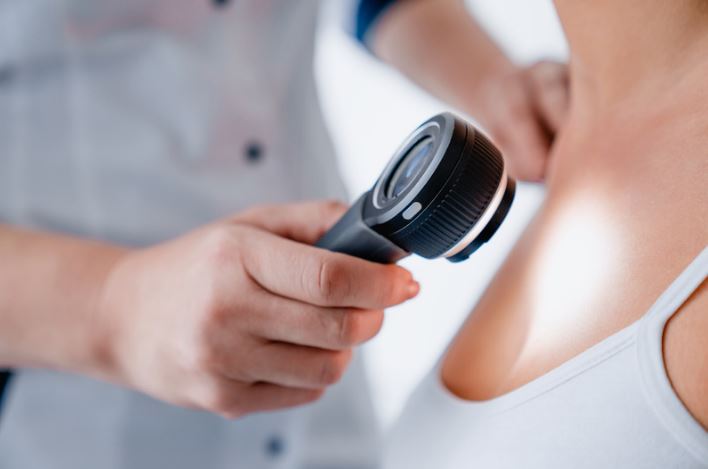A full body skin check and mole-mapping (also known as body-mapping) are the same thing right? Wrong! While they both have the purpose of detecting skin cancer on your body, they are two different processes. So how do you know which one to use? Continue reading to learn more!
Full Body Skin Checks
At Qutis the service we offer is full body skin checks. Generally, our doctors prefer viewing your skin with their own eyes or through a dermatoscope as opposed to through screens. They may take individual photos of moles to review later on, but for the most part, examining your skin top to toe is what happens in your full body skin check.
The cancer council position statement has the following to say about dermoscopy. “The use of dermoscopy by experienced clinicians has been found to increase diagnostic accuracy. Dermoscopy (surface microscopy, dermatoscopy, epiluminescence microscopy) uses a hand-held magnifying device to improve visualisation of diagnostic features of pigmented and non-pigmented skin lesions that cannot be seen with the naked eye. Studies in the dermatologist setting have shown a reduction in rates of excisions of benign lesions associated with use of dermoscopy. In the general practice setting, studies have shown improvements in sensitivity for melanoma diagnosis for clinicians who have experience in the use of dermoscopy.“
Mole-mapping
So does that mean that mole-mapping should become obsolete? No! Cancer council continues this way: “Total body photography is an additional aid used particularly for individuals at high risk of melanoma such as those with a high naevus count or multiple dysplastic naevi. While no randomised-controlled trials have been undertaken, more recent studies have confirmed that the use of total body photography detects early stage melanoma and has lower biopsy rates in individuals at high risk of melanoma.”
The Answer?
So the answer to which one is better? Between full skin checks and mole-mapping, the answer is both! Depending on your situation of whether you are wanting a regular check, or further assessment, either may work for you. Speak with your GP or skin check doctor to find out which may be more suitable to your skin.
“Australian clinical practice guidelines recommend the use of short-term sequential digital dermoscopic imaging to assess individual melanocytic lesions of concern that lack dermoscopic features of melanoma for patients at average risk. For high risk patients, long-term sequential digital dermoscopic imaging should be used instead.” says Cancer council.
If you would like more information please visit : https://www.cancer.org.au/about-us/policy-and-advocacy/position-statements/uv/early-detection. Or visit our website and read the content of our ‘What happens at your skin check’ flyer (https://qutis.com.au/wp-content/uploads/2022/09/About-Your-Skin-Check.pdf)


Recent Comments